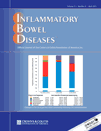Immediate and long-term outcomes of corticosteroid therapy in pediatric crohn's disease patients
Abstract
Background:
Although a mainstay of treatment of moderate to severe Crohn's disease (CD), corticosteroids use presents significant challenges because of large interindividual variability in response. Corticosteroid-dependence is of particular concern in children, where high rates have been reported. We examined the burden of corticosteroid-resistance and dependence in a well-characterized cohort of pediatric CD patients and investigated potential predictors of response.
Methods:
Children diagnosed with CD (<18 years), were recruited from two Canadian pediatric gastroenterology clinics. Immediate and long-term responses to corticosteroid therapy were retrospectively ascertained. Response rates (resistance and dependence) were estimated and potential predictors assessed using logistic regression analysis.
Results:
Of the 645 CD patients, 364 (56.2%) received corticosteroids. The frequency of corticosteroid-resistance was (8.0%) (95% confidence interval [CI]: 5.0%–11%) and 40.9% (95% CI: 39.0%–46.0%) became dependent. In univariate analysis female gender (odds ratio [OR] = 2.49, 95% CI: 1.1–5.5, P = 0.025), disease severity (OR = 2.43, 95% CI: 1.10–5.38, P = 0.029), and complicated disease (OR = 2.75, 95% CI: 1.18–6.41, P = 0.019) were associated with resistance. In multivariate analysis lower age at diagnosis (OR = 1.34,95% CI: 1.03–3.01, P = 0.040), coexisting upper digestive tract involvement (OR = 1.35, 95% CI: 1.06–3.07, P = 0.031), and concomitant immunomodulator use (OR = 0.35, 95% CI: 0.16–0.75, P = 0.007) were significantly associated with steroid dependency.
Conclusions:
Our results demonstrate that steroid dependency is a frequent complication in children with CD. Children with an earlier age at diagnosis and coexisting upper digestive tract involvement could be potentially targeted for steroid-sparing therapy. (Inflamm Bowel Dis 2011)




